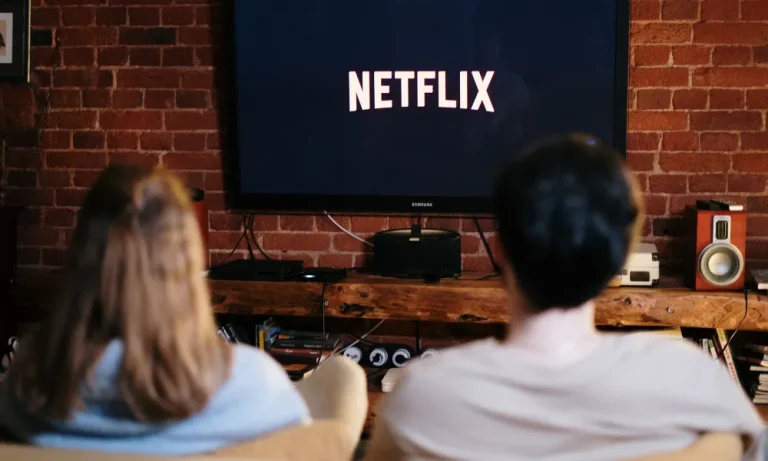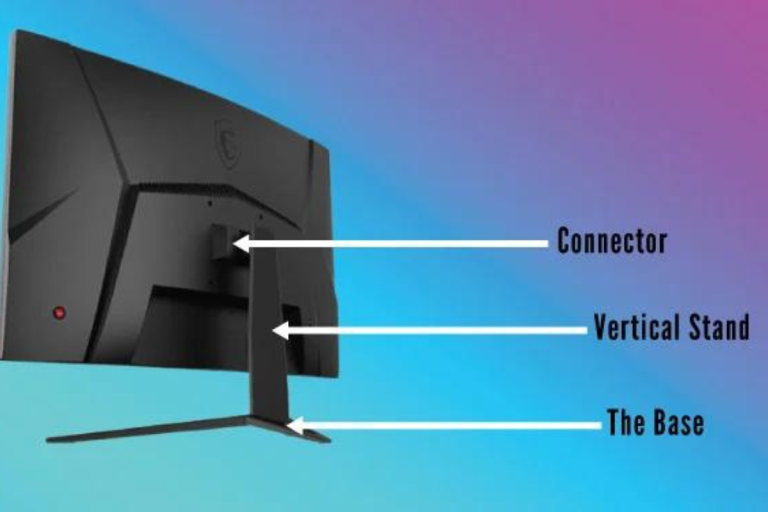How to Block YouTube on TV?
YouTube has emerged as a ubiquitous entertainment platform, captivating audiences with its vast array of videos. However, amidst the allure lies the need for parental control and minimizing distractions during TV time.
This article delves into the significance of implementing such measures to ensure a focused viewing experience.
Unveiling the Potential Risks
YouTube’s vast library of user-generated content brings with it certain inherent risks. While there is an abundance of informative and entertaining videos, unfiltered access can also lead to exposure to explicit language, violence, hate speech, or other objectionable material.
This poses a significant concern for parents striving to maintain a safe online environment for their children.
The Impact on Children
Children are particularly vulnerable as they navigate through the digital landscape. Inappropriate videos can hinder their emotional well-being, influence behavior negatively, or even expose them to dangerous ideologies.
Moreover, excessive screen time spent watching unrelated content can hamper academic performance and impede healthy social interactions.
Addressing Concerns Effectively:
To mitigate these risks effectively, implementing parental controls becomes paramount. By utilizing various methods such as filtering tools or restricted mode settings available on YouTube itself or through external devices like routers or third-party applications designed specifically for blocking unwanted content on TVs.
Engaging in open conversations about internet safety and setting clear boundaries will further enhance protection against unsuitable material while fostering responsible digital habits among young viewers.
By understanding these potential dangers associated with unrestricted YouTube access and actively taking steps towards controlling them, families can create a safer online environment that promotes positive engagement without compromising on entertainment value.
Methods to Block YouTube on TV
Method 1: Built-in Blocking Features
Smart TVs come equipped with built-in parental control options, enabling users to regulate access to certain content. This method offers a convenient way to establish restrictions and ensure a safer viewing experience for all.
Exploring the Built-In Options: Many smart TV models provide native features that allow users to block specific apps or websites, including YouTube.
These built-in blocking features vary across brands and models but generally offer similar functionalities.
Step-by-Step Instructions:
To access these parental control options, follow these simple steps:
- Navigate to the Settings Menu: Locate the settings menu on your smart TV by using either the remote control or on-screen navigation buttons.
- Find Parental Control Settings: Look for an option labeled “Parental Controls,” “Safety,” or something similar within the settings menu.
- Set Up Restrictions: Once in the parental control settings, you can typically choose which applications or websites you want to restrict access to—for example, YouTube.
- Customize Access Levels: Depending on your preferences, you may have additional customization options such as setting age-based restrictions or creating PIN codes for unlocking restricted content.
- Save and Activate Restrictions: After configuring your desired restrictions, save your changes and exit the settings menu.
By following these step-by-step instructions provided by your smart TV’s manufacturer-specific interface, you can effectively set up blocking features and tailor them according to your family’s needs.
Utilizing built-in blocking features is an accessible approach that allows parents and guardians to exercise greater control over what content their children can access through YouTube on their smart TVs while ensuring a safer digital environment at home
Method 2: Router-Based Blocking
Router-based blocking offers a comprehensive solution to restrict YouTube access on all devices connected to your Wi-Fi network.
By applying filters directly at the router level, you can effectively control content accessibility for everyone in your household.
Accessing Router Settings and Applying Filters:
To set up router-based blocking for YouTube, follow these general steps:
- Access Your Router’s Admin Panel: Open a web browser and enter your router’s IP address (e.g., 192.168.0.1) into the address bar.
- Log In with Administrator Credentials: Enter the appropriate username and password provided by your internet service provider or customized during the initial setup.
- Navigate to Content Filtering/Parental Control Section: Look for options related to content filtering or parental controls within the admin panel.
- Choose YouTube as Blocked Site/Application: Locate the section where specific websites or applications can be blocked and add “youtube.com” or relevant URLs associated with YouTube.
- Save Settings and Reboot if Required: After applying the changes, save settings within your router’s admin panel, which may require a reboot of the router for changes to take effect.
Please note that these instructions are general guidelines; actual steps may vary depending on your specific router model.
Method 3: Third-party Apps or Devices
In addition to built-in features and router-based blocking, there are third-party apps and devices available that offer specialized solutions for blocking specific websites or applications like YouTube. These options provide an extra layer of control over access restrictions, ensuring a safer viewing experience.
Exploring Third-Party Solutions: Numerous third-party apps and devices have been developed explicitly for the purpose of blocking unwanted content on TVs, including YouTube. These tools offer additional features beyond what is provided by smart TV settings or routers.
Popular Options in the Market:
Here are a few popular third-party options along with their installation process:
- AppBlock: Available as both a mobile application and browser extension, AppBlock allows users to create custom blocklists and schedule when certain apps or websites should be blocked.
Installation Process: Download the AppBlock app from your device’s app store or install the browser extension from the respective web store. Follow on-screen instructions to set up blocklists and configure preferences. - Circle Home Plus: The Circle Home Plus device connects directly to your home network, providing advanced parental controls that can be managed through a companion mobile app.
Installation Process: Purchase the Circle Home Plus device online or at retail stores. Connect it to your Wi-Fi network following the provided instructions, then download the Circle Parental Controls app to manage settings. - OpenDNS Family Shield: OpenDNS offers free DNS filtering services designed specifically for family-friendly internet usage.
Installation Process: Modify your router’s DNS settings by using OpenDNS servers (208.67.222.123 and 208.67.220) as primary/secondary DNS addresses based on provided instructions for your specific router model.
These are just a few examples; explore different options available in marketplaces such as app stores or reputable online retailers based on compatibility with your devices and desired functionality.
Method 4: Creating User Profiles with Restrictions
Creating separate user profiles on devices can be an effective method to limit access to certain apps, including YouTube.
By setting up restricted profiles, you can establish personalized boundaries for different users based on their needs and age appropriateness.
Utilizing User Profiles: User profiles allow for individualized settings and restrictions tailored to specific users.
This feature is available on various devices, including smartphones, tablets, smart TVs, and gaming consoles. By creating separate profiles for each member of your household, you can control the content accessible through YouTube.
Setting Up Restricted Profiles:
The process of setting up restricted profiles may vary slightly depending on the device type:
- Smartphones/Tablets (Android):
- Go to Settings > Users & accounts > Add user or profile.
- Choose the “Restricted Profile” option.
- Customize settings by selecting which apps are allowed or blocked within the profile.
- Set a PIN code if desired for additional security.
- Smart TVs (Some models support this feature):
- Locate the Settings menu using your remote control.
- Look for options related to user profiles or parental controls.
- Create a new profile and customize access permissions specifically targeting YouTube app usage.
- Gaming Consoles (e.g., Xbox One):
- Access System Settings from the main menu.
- Find the Family Settings or Parental Controls section.
- Create a child account under your Microsoft family group and adjust content restrictions accordingly.
By following these general instructions based on the device types mentioned above, you can create individual user profiles with customized restrictions that ensure safer access to YouTube while maintaining personalization according to different users’ needs.
Tips for Effective Implementation
Implementing any of the methods mentioned above to restrict YouTube access requires careful consideration and active involvement.
By following these general guidelines, you can ensure a successful implementation that promotes online safety and responsible digital habits.
Open Communication
Engage in open conversations with your family members, especially children, about the importance of implementing restrictions on YouTube access.
Explain why certain content may be inappropriate or harmful and emphasize the need for creating a safe online environment.
Regular Monitoring
Continuously monitor usage patterns to ensure that the implemented restrictions are effective. Regularly check whether any unauthorized changes have been made or if there are potential workarounds being used by users in bypassing the restrictions.
Educate About Online Safety Measures
Take time to educate children about online safety measures beyond just setting up restrictions. Teach them about privacy settings, how to recognize and report inappropriate content or behavior, and encourage responsible digital citizenship.
Encourage Balanced Screen Time
While it is essential to regulate YouTube access, also promotes a healthy balance between screen time and other activities such as physical exercise, reading books, or engaging in hobbies. Encourage alternative forms of entertainment while emphasizing the value of offline interactions.
Stay Up-to-Date with Technology
As technology evolves rapidly, stay informed about new features or updates related to parental controls offered by devices or apps involved in restricting YouTube access. This will allow you to adapt your approach accordingly and make necessary adjustments when needed.
By adhering to these tips throughout the implementation process, you can foster an environment where individuals develop a better understanding of online safety while enjoying an enriching digital experience without compromising their well-being
Common Challenges & Troubleshooting Tips
Blocking YouTube on TV can be a useful way to limit screen time and ensure a more focused viewing experience. However, users may encounter some challenges when attempting to block this popular video-sharing platform.
1. Compatibility Issues One of the most common challenges is compatibility between the blocking method and the TV device itself. Different TVs have different operating systems and settings, which can affect how YouTube is blocked. It’s important to check if your specific TV model supports blocking apps or websites.
2. Limited Blocking Options Some TVs may not offer built-in features for blocking specific apps like YouTube. This limitation can make it challenging for users who want stricter control over their viewing options.
3. Technical Glitches Even after successfully setting up app blocking on a TV, technical glitches may occur due to software updates or network connectivity issues.
Frequently Asked Questions
1. Can I block YouTube on my TV?
Yes, it is possible to block access to YouTube on your TV. There are several methods you can use, such as utilizing parental control features or blocking the website directly.
2. How do I block YouTube using parental controls?
Many smart TVs offer built-in parental control features that allow you to restrict access to certain apps and websites, including YouTube. You can usually find these settings in the system preferences or settings menu of your TV. Simply enable the parental control feature and add YouTube to the blocked list.
3. Is there a way to block YouTube without using parental controls?
If your TV does not have built-in parental control options or if you prefer an alternative method, you can consider blocking YouTube at the router level. This involves accessing your router’s settings and adding specific URL blocks for youtube.com or related domains.
4. Are there any third-party apps available for blocking YouTube on TVs?
Yes, some third-party applications are designed specifically for blocking certain websites on various devices, including smart TVs. These apps often provide additional features like scheduling time limits and monitoring internet usage across multiple devices connected to your network.
5. Can I temporarily unblock YouTube when needed?
In most cases, yes! If you’ve used a simple URL-based block at the router level or enabled parental controls on your TV, you can typically disable these restrictions temporarily whenever necessary by adjusting the settings accordingly.
Personally, I found that blocking YouTube on my own TV helped me stay focused during essential tasks and reduced the temptation to mindlessly scroll through videos. It allowed me to create a more intentional viewing habit that aligned with my goals.



